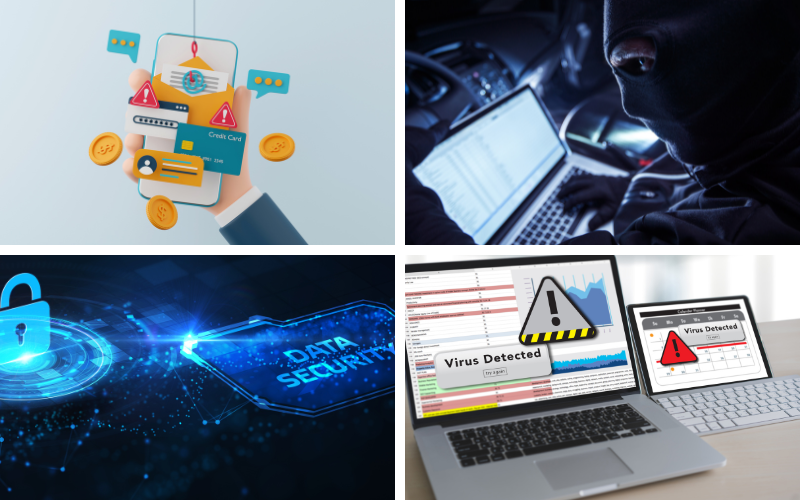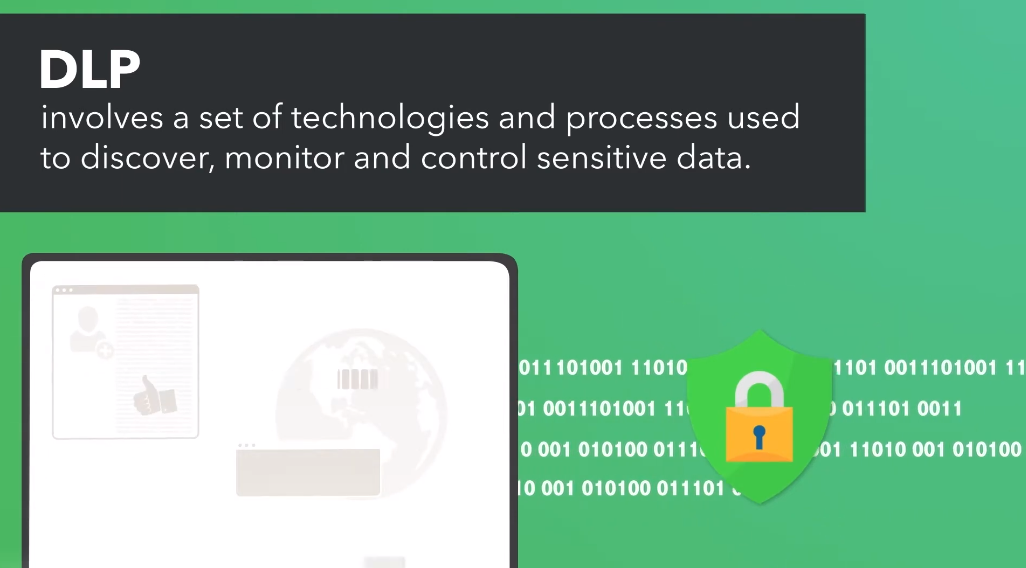Importance of Securing Data in Use
Securing data in use is a crucial aspect of data security. Data in use refers to data that is being actively processed or accessed by a system or user. This data is vulnerable to attacks such as data theft, unauthorized access, and malware injection. There are several ways to secure data in use. One of the most effective methods is to use encryption. Encryption involves converting data into a coded format that can only be deciphered with a specific key. This ensures that even if the data is intercepted
Risks of Leaving Data Unprotected

Leaving data unprotected can lead to serious consequences such as data breaches, loss of sensitive information, financial losses, and damage to an organization’s reputation. Hackers and malicious actors can exploit vulnerabilities in systems and networks to gain unauthorized access to data in use, steal it, or inject malware into it. This can result in the loss of confidential information such as personal data, financial records, and intellectual property.
Understanding Data in Use
Understanding data in use is crucial to protect it from unauthorized access and potential breaches. Data in use refers to the information that is currently being accessed, processed, or transmitted within a system or network. This can include data being viewed on a computer screen, data being transferred between devices, or data being processed by an application. To protect data in use, organizations can implement security measures such as access controls, encryption, and network monitoring.
Different Forms of Data in Use

There are several forms of data in use, including:
1. Active data: This refers to data that is currently being used or accessed by an application or user.
2. Temporary data: This refers to data that is created and used by an application for a specific task or process, and is then deleted once the task is complete.
3. Cached data: This refers to data that is stored temporarily in a computer’s memory or hard drive for quick access, but is not permanently stored.
Why Data In Use Are Vulnerable
Data in use can be vulnerable to security threats because it is actively being accessed and manipulated by applications or users. Malicious actors can exploit vulnerabilities in the application or system to gain unauthorized access to the data, steal sensitive information, or modify the data for their purposes. Additionally, if the data is not properly secured or encrypted, it can be intercepted or compromised during transmission between applications or systems. Therefore, it is important to implement strong security measures to protect data in use, such as access controls,
Common Threats to Data in Use

- Malware attacks
- Insider threats
- Physical security risks
- Network vulnerabilities
Best Practices for Securing Data in Use
- Using encryption
- Implementing access controls
- Implementing multi-factor authentication
- Keeping software and hardware up to date
- Monitoring user activity
Data Security Tools and Technologies
There are various tools and technologies available to ensure data security in use. Some of them are:
1. Data Loss Prevention (DLP) software: DLP software helps in identifying and preventing sensitive data from unauthorized access, theft, or misuse.
2. Virtual Private Network (VPN): VPNs provide secure remote access to sensitive data from anywhere and protect against unauthorized access.
3. Endpoint Protection: Endpoint protection tools provide security to endpoints like laptops, desktops, mobile devices, and other devices connected to internet.
Data Loss Prevention (DLP) Solutions

Data Loss Prevention (DLP) solutions are software tools that help organizations identify and protect sensitive data from unauthorized access, theft, or misuse. These solutions typically use a combination of data classification, policy enforcement, and monitoring to prevent data loss. DLP solutions can be used to protect sensitive data such as financial information, personal information, and intellectual property.
Virtual Private Networks (VPNs)
Virtual Private Networks (VPNs) are secure networks that allow users to access the internet securely and privately. VPNs encrypt the user’s internet traffic and route it through a remote server, making it difficult for anyone to intercept or access the user’s data. This is especially useful for remote workers, travelers, or anyone who wants to access the internet securely and privately. VPNs can also be used to bypass geo-restrictions and access content that may be blocked in certain regions.
Secure Sockets Layer (SSL) Technology
is a security protocol that is commonly used to protect sensitive information such as credit card details, login credentials, and personal data. SSL technology encrypts the data that is transmitted between a user’s web browser and a website, making it unreadable to anyone who may intercept it. This helps to prevent data breaches and protect against identity theft. SSL is commonly used on websites that require users to enter sensitive information, such as online banking sites, e-commerce sites, and social media platforms.
Advanced Threat Protection (ATP) Solutions
Advanced Threat Protection (ATP) solutions are security tools designed to detect and prevent advanced cyber threats. These threats include malware, zero-day attacks, and other sophisticated attacks that traditional security solutions may not be able to detect. ATP solutions use a combination of techniques, such as behavioral analysis, machine learning, and sandboxing, to identify and block potential threats. They also provide real-time threat intelligence and automated response capabilities to help organizations quickly respond to and remediate threats.
Securing Data in Cloud-Based Environments
Securing data in cloud-based environments is a critical concern for organizations of all sizes. Cloud service providers typically offer a range of security measures, such as firewalls and encryption, to help protect data. However, it is important for organizations to also take responsibility for securing their own data in the cloud. One approach is to use cloud access security brokers (CASBs), which provide visibility and control over cloud-based applications and data.
Risks of Cloud-Based Data in Use
There are several risks associated with storing and using data in cloud-based environments. These include:
1. Data breaches: Cloud-based data is vulnerable to cyberattacks, which can result in data breaches and the theft of sensitive information.
2. Compliance issues: Organizations may face compliance issues if they store sensitive data in the cloud without proper security measures in place. (Xanax)
3. Data loss: Data stored in the cloud can be lost due to hardware failure, natural disasters, or human error.
Best Practices For Securing Cloud-Based Data
To ensure the security of cloud-based data, organizations should follow these best practices:
1. Use strong authentication: Implement multi-factor authentication to ensure that only authorized users can access cloud-based data.
2. Encrypt data: Use encryption to protect data both in transit and at rest in the cloud.
3. Implement access controls: Use access controls to restrict access to sensitive data to only those who need it.
Choosing The Right Cloud Service Provider
When choosing a cloud service provider, organizations should consider the following factors:
1. Security measures: Look for a provider that has strong security measures in place, such as encryption, firewalls, and intrusion detection systems.
2. Compliance: Ensure that the provider complies with relevant regulations and standards, such as HIPAA or GDPR.
3. Data backup and recovery: Make sure the provider has a robust backup and recovery plan in place in case of data loss or disaster.
Securing Data in Mobile Devices
When it comes to securing data in mobile devices, there are several steps that individuals can take to protect their information:
1. Use strong passwords or passcodes: Set a strong password or passcode to prevent unauthorized access to your device.
2. Enable two-factor authentication: This adds an extra layer of security by requiring a second form of authentication, such as a fingerprint or facial recognition.
3. Install security software: Install reputable security software that can detect and remove malware and other threats.
Legal and Regulatory Requirements for Securing Data in Use
There are various legal and regulatory requirements that organizations must adhere to in order to secure data in use. Some of these requirements include:
1. General Data Protection Regulation (GDPR): This regulation applies to all companies that handle the personal data of EU citizens. It requires companies to implement appropriate technical and organizational measures to protect personal data.
2. Health Insurance Portability and Accountability Act (HIPAA): This regulation applies to healthcare providers and requires them to implement measures to protect the privacy and security of patient information.
Conclusion
Based on the requirements you provided, it is important for companies to ensure they are compliant with regulations such as GDPR and HIPAA to protect the personal data of their customers and patients. Implementing appropriate technical and organizational measures is necessary to ensure the privacy and security of this sensitive information.
FAQs
What are the most common threats to data in use?
The most common threats to data in use include malware and viruses, insider threats, phishing attacks, and unauthorized access or theft of devices containing sensitive information. It is important for companies to implement security measures such as firewalls, antivirus software, and access controls to mitigate these risks.
How can cloud-based data in use be secured?
Cloud-based data in use can be secured by implementing strong encryption methods, access controls, and regular monitoring of user activity. It is also important to choose a reputable cloud service provider that has a strong track record of security and data protection. Additionally, companies should have a clear understanding of their data governance policies and ensure that all employees are trained on proper data handling and security protocols.
What should be done in the event of a data breach?
In the event of a data breach, it is important to act quickly and follow a set of established protocols. First, isolate the affected systems and devices to prevent further damage. Then, notify the appropriate authorities and affected individuals as required by law. It is also important to conduct a thorough investigation to determine the cause of the breach and implement measures to prevent it from happening again in the future. Finally, provide support and resources to affected individuals, such as credit monitoring services or identity theft protection.
How can user education and awareness improve data security?
User education and awareness can greatly improve data security by empowering individuals to take responsibility for their own data protection. By educating users on best practices for creating strong passwords, avoiding phishing scams, and recognizing suspicious activity on their devices, they can become more vigilant and proactive in protecting their personal information. Additionally, providing regular training and updates on the latest security threats and technologies can help users stay informed and prepared to prevent and respond to data breaches.
What are some emerging threats to data in use?
Some emerging threats to data in use include:
1. Insider threats: This refers to the risk posed by employees or other insiders who have authorized access to sensitive data and may intentionally or unintentionally misuse or leak it.
2. Cloud-based attacks: As more businesses move their data to the cloud, there is an increased risk of cyber attacks targeting cloud infrastructure and services.
3. Artificial intelligence (AI) attacks: As AI becomes more prevalent in businesses, it can also be used by hackers to automate attacks.
What advancements in data security technologies can we expect in the future?
In the future, we can expect advancements in data security technologies such as:
1. Quantum encryption: Quantum encryption uses the principles of quantum mechanics to create unbreakable encryption codes, making it almost impossible for hackers to access sensitive data.
2. Blockchain technology: Blockchain technology can be used to create a decentralized and secure database that is resistant to tampering and hacking.
3. Multi-factor authentication: Multi-factor authentication adds an extra layer of security by requiring users to provide more than one form of identification.
